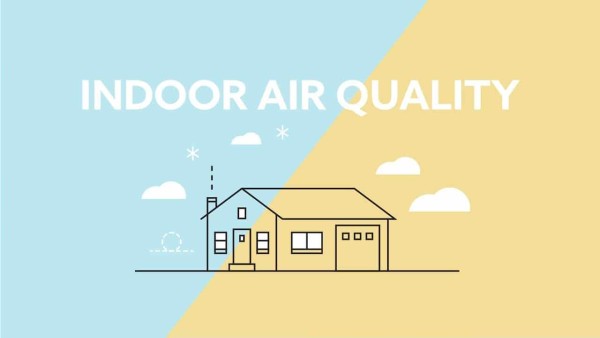
Have you ever stopped to think about the air you breathe inside your home or office? We often focus on outdoor pollution, but Indoor Air Quality (IAQ) plays a significant role in our well-being. Poor IAQ can lead to health issues like allergies, respiratory conditions, and even long-term chronic diseases.
With the average person spending nearly 90% of their time indoors, the quality of indoor air becomes a crucial factor in determining overall health. Indoor air can be two to five times more polluted than outdoor air due to enclosed spaces trapping pollutants.
This guide will help you understand indoor air quality, its impact on health, sources of pollution, and actionable steps to improve it for a healthier lifestyle.
What is Indoor Air Quality?
Indoor Air Quality refers to the cleanliness and safety of the air inside buildings and structures. It is influenced by:
- Pollutants: Dust, mold, pet dander, chemicals from household products, and airborne bacteria.
- Ventilation: The flow of fresh air inside a building and how well it removes contaminants.
- Humidity Levels: High moisture encourages mold growth, while dry air can cause respiratory discomfort.
- Temperature: Extreme indoor temperatures can alter air composition and affect occupant comfort.
Maintaining good IAQ is essential to ensuring that indoor spaces remain safe and comfortable for occupants, whether at home, school, or the workplace.
Why is Indoor Air Quality Important?
Health Impact
Breathing poor-quality air can lead to various health problems, including:
- Short-term effects: Eye irritation, headaches, dizziness, fatigue, and allergic reactions.
- Long-term effects: Chronic respiratory diseases like asthma, lung infections, cardiovascular issues, and even an increased risk of lung cancer due to prolonged exposure to harmful pollutants.
- Vulnerable populations: Children, elderly individuals, and those with pre-existing conditions are especially susceptible to poor IAQ.
Productivity and Comfort
- Studies show that clean indoor air improves focus, cognitive performance, and overall well-being.
- Poor IAQ in workplaces can lead to increased sick days, lower energy levels, and reduced productivity.
- Schools with poor ventilation have been linked to lower academic performance in students.
Common Indoor Air Pollutants and Their Effects
Pollutant
Sources
Health Effects
Dust & Dander
Pets, carpets, furniture
Allergies, asthma
Mold & Mildew
Damp areas, leaks
Respiratory issues, infections
VOCs (Volatile Organic Compounds)
Paint, cleaning products, air fresheners
Headaches, nausea, liver damage
Carbon Monoxide (CO)
Gas appliances, fireplaces
Dizziness, poisoning, fatal at high exposure
Radon
Soil, building materials
Lung cancer risk
Asbestos
Old insulation, tiles
Mesothelioma, lung disease
Tobacco Smoke
Cigarettes, secondhand exposure
Lung disease, heart disease, cancer
How to Improve Indoor Air Quality
1. Ensure Proper Ventilation
- Open windows regularly to allow fresh air circulation and remove stale air.
- Use exhaust fans in kitchens and bathrooms to remove moisture and pollutants.
- Consider installing an air exchange system or mechanical ventilation in airtight buildings.
2. Reduce Indoor Pollutants
- Use HEPA air purifiers to filter airborne contaminants.
- Choose non-toxic, low-VOC cleaning supplies and furniture.
- Avoid smoking indoors and minimize the use of scented candles or incense.
- Regularly clean HVAC systems and replace filters to ensure proper airflow.
- Keep carpets, furniture, and curtains dust-free by vacuuming frequently.
3. Control Humidity Levels
- Keep indoor humidity between 30%-50% to prevent mold growth and respiratory discomfort.
- Use dehumidifiers in damp areas like basements.
- Fix leaky pipes and roofs to eliminate sources of excess moisture.
- Dry wet areas immediately to prevent mold buildup.
4. Use Air-Purifying Plants
Certain houseplants can naturally improve air quality by filtering toxins:
- Spider Plant – Absorbs carbon monoxide and formaldehyde.
- Peace Lily – Reduces mold spores, VOCs, and airborne microbes.
- Snake Plant – Converts CO2 into oxygen at night, improving sleep quality.
- Aloe Vera – Absorbs airborne chemicals while adding moisture to the air.
DIY Air Quality Improvements: Small Changes with Big Impact
You don’t need expensive equipment to improve your IAQ. Here are some simple steps:
- Open windows for 10-15 minutes daily.
- Use activated charcoal or baking soda to absorb odors and toxins.
- Add natural beeswax candles to help purify air instead of synthetic air fresheners.
- Keep shoes outside to reduce the entry of outdoor pollutants.
Final Thoughts
Taking control of your Indoor Air Quality can significantly improve your health, comfort, and productivity. Start today by identifying potential air pollutants in your home and implementing the steps outlined in this guide.
Do you want to breathe cleaner air today? Explore our comprehensive guide on air purifiers and find the best options for your home!

